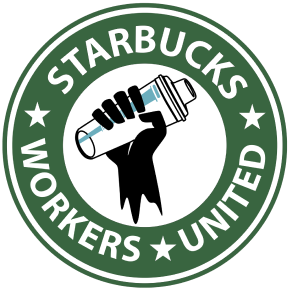The Wagner Act is kind of a big deal. It’s the law that protects American workers’ right to unionize. It’s been around for almost 90 years — yet most people have probably never heard of it. Get to know what this game-changing labor policy is, and what it could mean for you if you’re thinking about forming a union in your workplace.
What is the Wagner Act?
The Wagner Act protects the right of private-sector workers to form, join, and assist labor unions. Officially called the National Labor Relations Act of 1935, it also guarantees the right to bargain collectively with employers over issues like pay, hours, and working conditions. The law also makes it illegal for employers to threaten, fire, or discriminate against workers for joining unions.
The Wagner Act established the National Labor Relations Board (NLRB). This federal body mediates labor disputes between businesses and workers and also has the power to punish businesses for unfair labor practices. If you want to form a union in your workplace or file an unfair labor practice complaint, the Wagner Act has your back.
And that’s not all the Wagner Act covers. It protects all “concerted activities for the purpose of collective bargaining or other mutual aid or protection.” That means you have a right to team up with your co-workers to address work-related issues. From the NLRB’s website, examples of this include:
“Talking with one or more coworkers about your wages and benefits or other working conditions, circulating a petition asking for better hours, participating in a concerted refusal to work in unsafe conditions, openly talking about your pay and benefits, and joining with coworkers to talk directly to your employer, to a government agency, or to the media about problems in your workplace.”
And you don’t need a union to do any of these things.
It’s illegal for your employer to discriminate against you based on your race or gender. Similarly, it’s also illegal for them to discriminate against you based on your discussions with your co-workers about issues affecting your workplace or your attempts to raise these issues with your bosses. (On the flipside, it’s also illegal for your employer to reward workers for not engaging in this activity.)
But bear in mind: Just because you have rights doesn’t mean your employer will necessarily respect them. Unfortunately, employers often fight dirty when workers seek to realize their power in the workplace. So let’s dig into who exactly the Wagner Act protects and what those protections mean in practice.
What are employees’ rights under the Wagner Act?
The Wagner Act is “a bill of rights for workers,” according to labor law scholar William B. Gould IV, professor at Stanford Law School and former chairman of the NLRB.
But what are those rights?
On a basic level, it means that you and your co-workers can get together to talk about your workplace and the problems you’re facing to your heart’s content. You can also raise these issues with your employer as a group without your employer penalizing you. But let’s say you want to take things a step further.
The Wagner Act creates a mechanism for forming a union that the NLRB, an independent federal agency, officially recognizes. If you talk to your co-workers and get at least 30% of them to sign union authorization cards, you can submit those cards to the NLRB to petition them for a union election. From there, the NLRB holds an election in which all of your co-workers can vote to decide whether they want the union to represent them. If more than 50% vote yes to a union, then congrats — you’ll be certified by the NLRB.
Once you have union certification, the Wagner Act requires that your employer bargain with your union over the terms and conditions of your employment “in good faith.” This means management has to genuinely seek to negotiate an agreement over the issues you are raising, whether you’re asking for better wages or a safer workplace. They can’t stall endlessly just to draw out the process. They have to mean it, in other words.
And, if your employer engages in unfair labor practices, the Wagner Act allows you to file a charge with the NLRB. From there, the NLRB acts as a quasi-judicial body that determines whether your employer has violated the law and whether they have to pay a penalty or provide workers with some form of relief.
But experts in labor law want you to know that this is how it should work in theory.
What can employees do when employers fight back?
In practice, there are several hurdles.
First, what often happens when you hold a union election in the US is that your employer may push back. Hard.
“If the employer is hostile (and most are) to the idea of union representation, then they will engage in a kind of counter-attack,” says Gould. “They will probably instruct the supervisors to tell the workers all the bad things about unions that they allege exist, and they may call meetings — captive audience meetings — where employees have to listen during working time to an anti-union campaign.” (Find out more about captive audience meetings.)
As shady as these tactics are, they are technically lawful — at least for now. But the Wagner Act makes clear that certain employer behaviors aren’t allowed. For example, your employer can’t coerce, threaten, or prevent you from joining a union, nor can they make promises or provide benefits to employees who vote against a union.
Unfortunately, some employers violate this law. “The typical thing is, a company will say we’re firing you, but not because you’re engaged in concerted activity, not because you wanted to form a union — we’re firing you because you’re a terrible worker,” says Nelson Lichtenstein, labor historian and research professor in history at University of California, Santa Barbara. “That’s what they’ll do. And then you have to litigate it, and it’s a long process.”
Then again, that’s what the NLRB (and the Wagner Act) are for. If your employer violates your rights, you can go to the NLRB and request a hearing. In some cases, if the NLRB finds the employer is at fault, they may order the employer to give workers back their jobs or provide back pay for the time they’ve been unemployed. Lichtenstein cautions that these penalties aren’t enough of a deterrent. “The penalties are like pocket change,” he says. “They’re nothing, so companies have an incentive to break the law or manipulate the law.”
Part of the reason why employers are so brazen is that subsequent legislation and court decisions have weakened the Wagner Act — notably, the Taft-Hartley Act, which made it legal for employers to hold captive audience meetings (boo!), and the Landrum-Griffin Act, which banned secondary strikes and limited the right to picket.
So while the Wagner Act isn’t as powerful as it once was, it still upholds certain fundamental rights. “Laws and norms against, for example, racial discrimination or gender discrimination are well-known,” says Lichtenstein. Workers should also be aware that the law protects people who seek to form a union.
Who does the Wagner Act protect?
As a federal law, the Wagner Act protects all eligible private-sector employees, whether or not they are union members. That said, the Wagner Act is far from perfect. It doesn’t extend these protections to certain classes of workers, such as farm workers and government workers. Some states have passed supplementary laws that extend Wagner-like protections to these groups (for example, in New York, the Taylor Law does protect public-sector workers). If you’re unsure if the Wagner Act protects you, find out by searching the laws in your state and seeing if they apply to you.
Also, bear in mind that even if the Wagner Act doesn’t cover you, it’s still lawful for you to form a union. It’s just that you won’t have the legal mechanism for getting your union certified (i.e. making it official in the eyes of the NLRB) and having the protections that come with that. It is perfectly legal to start a union everywhere in the US.
Why is the Wagner Act important?
The Wagner Act is the bedrock of modern labor law and marked a historic victory in favor of workers in 1935. For the first time, it established the federal government as a mediator of disputes between companies and employees via a national body, the National Labor Relations Board (NLRB).
Before the Wagner Act, labor disputes sometimes led to civil unrest and violence. (One example: In 1914, financier John D. Rockefeller Jr. unleashed armed mercenaries and the National Guard against striking workers, killing them and their families.) Following a wave of strikes in 1934, the Wagner Act was an attempt to curb this type of chaos. Its goal was to uphold employees’ rights in the workplace, foster peaceful resolutions to labor disputes, and limit the disruption to the economy caused by strikes.
“In the 19th century, it was a conspiracy to form a union,” says Lichtenstein. “In the 20th century, [it became] totally legitimate.”
Basically, the Wagner Act marked a major (positive) shift in power in favor of workers. Sen. Robert F. Wagner, who sponsored the act, thought of it as a way of bringing democracy to the workplace. In his words, “The struggle for a voice in industry through the process of collective bargaining is at the heart of the struggle for the preservation of political as well as economic democracy in America.” And while anti-worker forces have weakened the full power of the Wagner Act over time, it remains an important tool for upholding workers’ rights.
How can the Wagner Act help workers today?
For one thing, knowing your rights builds confidence. “People assume that unionism is simply illegal,” but that’s totally false, says Lichtenstein. “You should know that there’s a labor law out there that encourages the formation of unions. The Wagner Act encourages that — not just permits it, but encourages it. If you read the prologue, it says this is a good thing for the economy and democracy.”
At EWOC, we want workers to understand that they have a legal right to form a union, and it’s illegal for their employer to retaliate, threaten them, or obstruct their efforts. The reality is that employers do retaliate in all kinds of ways (exhibit A: Starbucks has illegally fired workers who’ve been involved in labor organizing), but the Wagner Act exists to provide a legal basis for deterring and challenging this type of corporate misbehavior.
Imperfect though it may be, the Wagner Act is here to help workers like you. So make the most of it.
Ready to start a union at work? Here’s how to do it.




